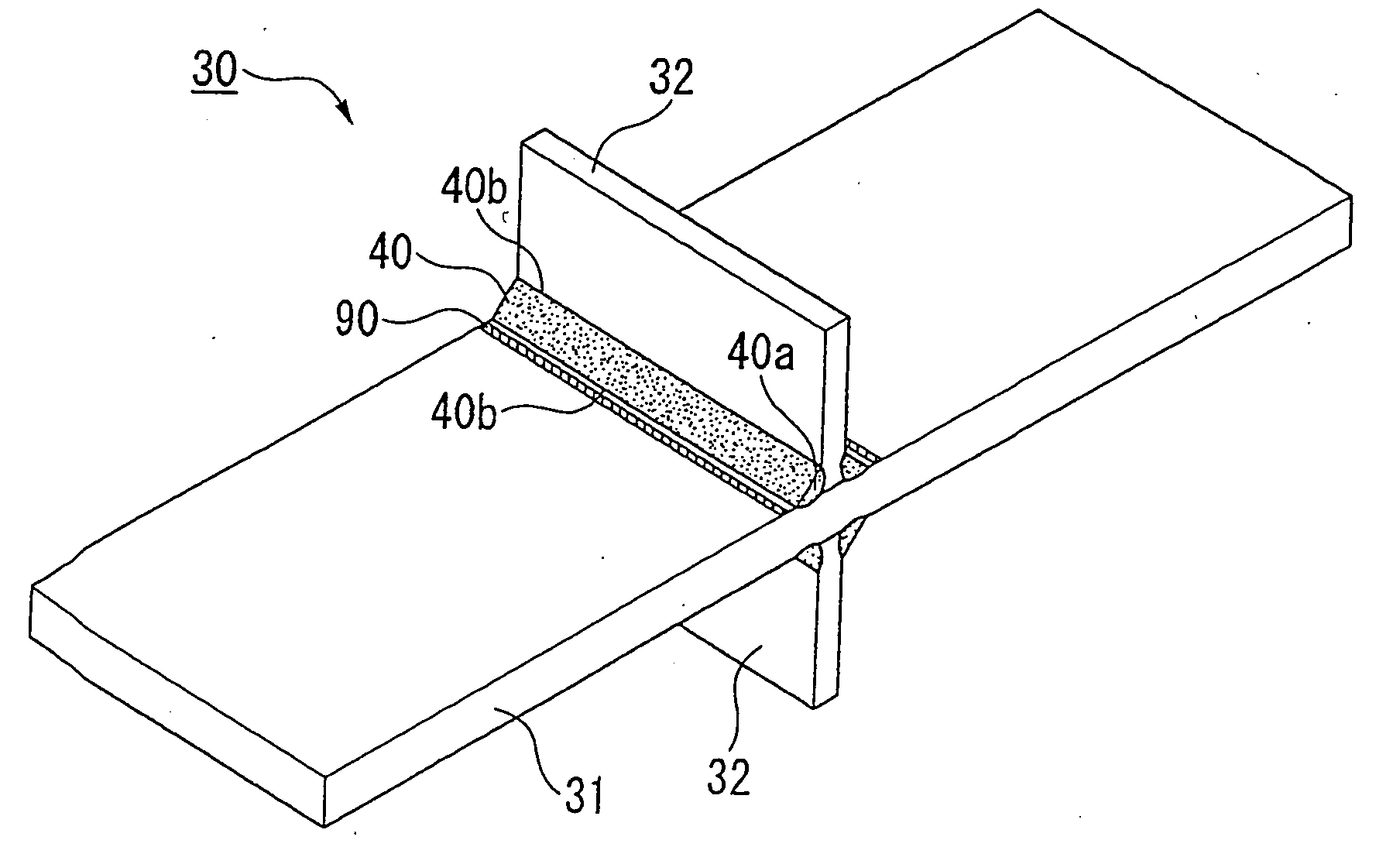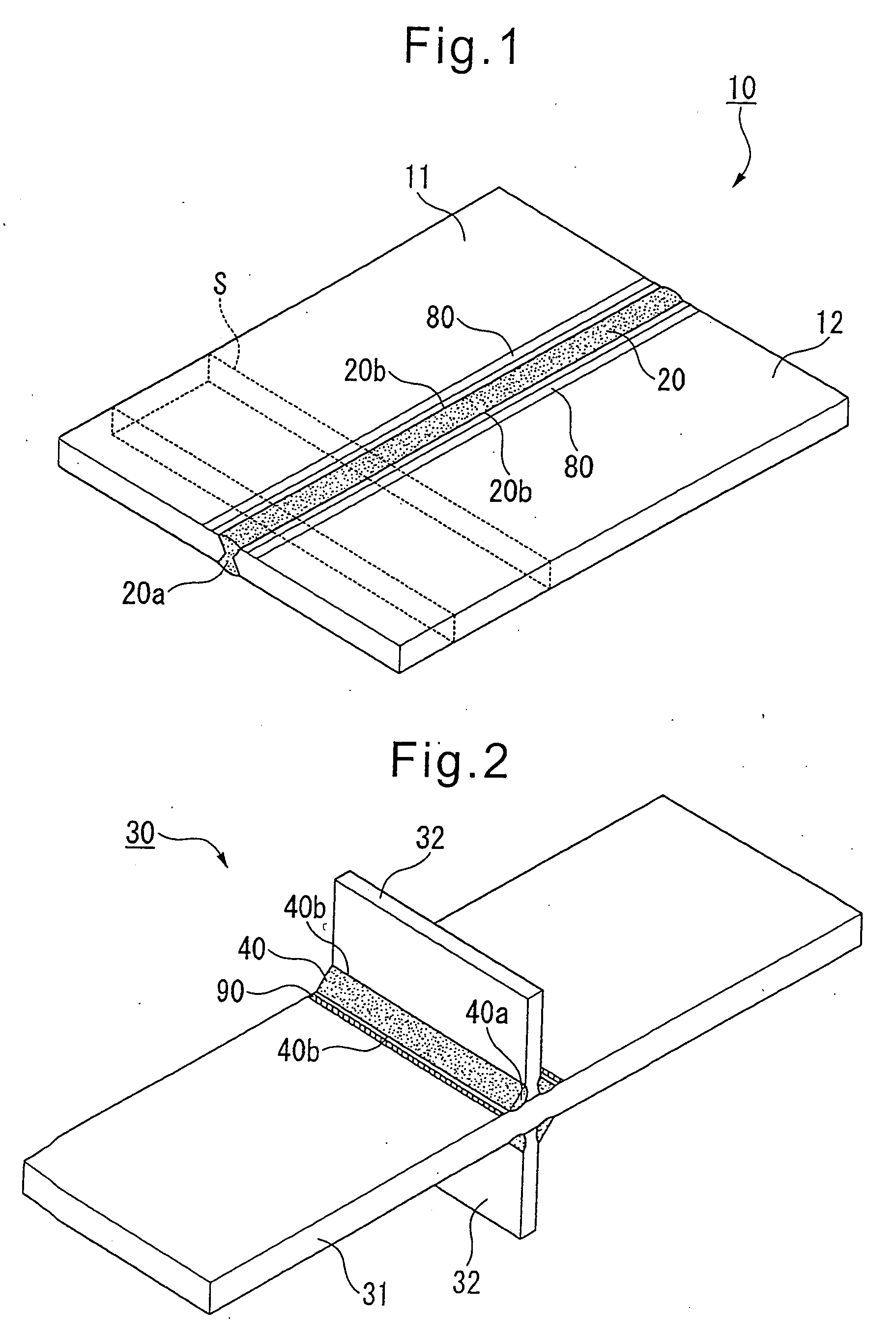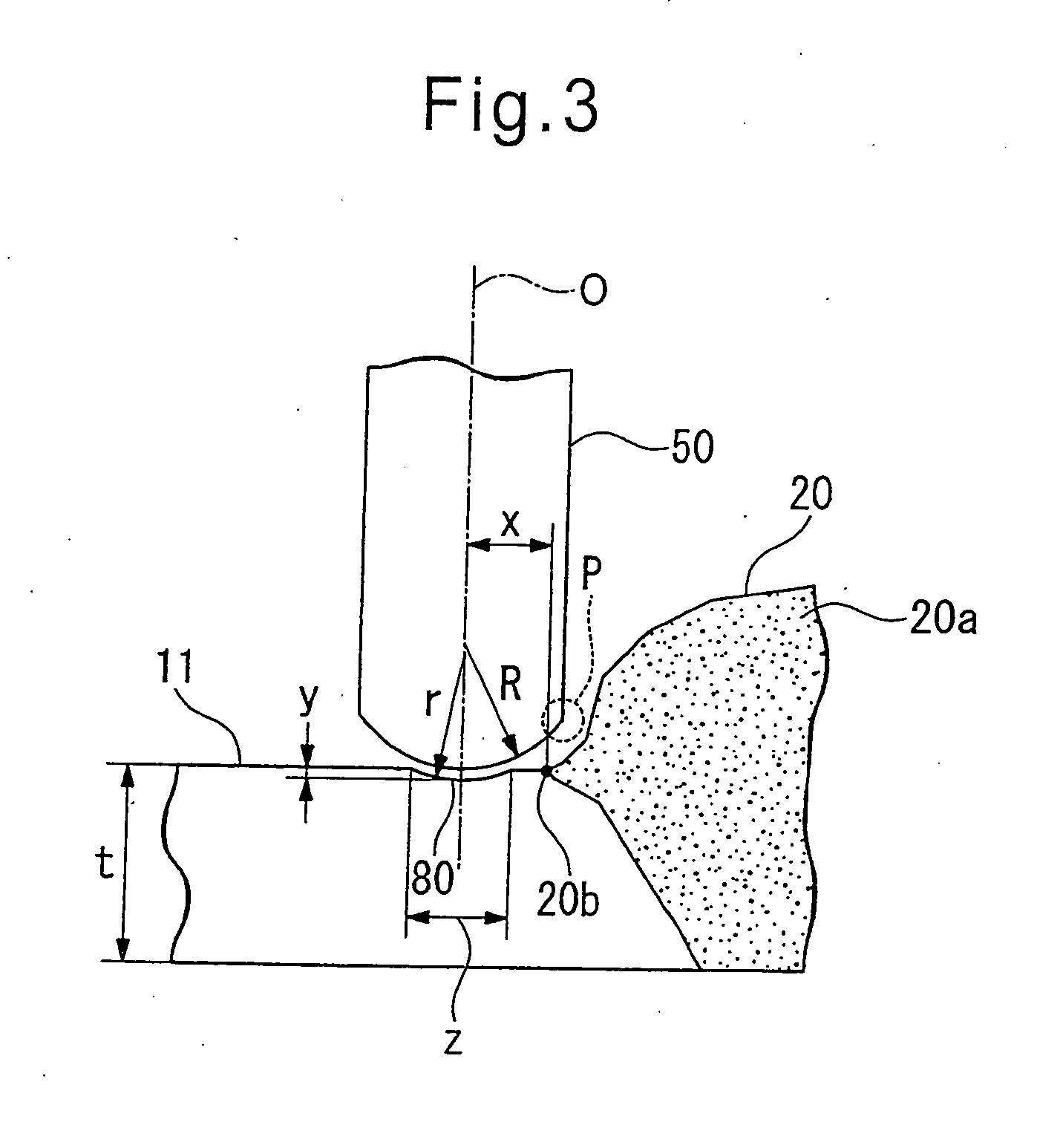Impact treatment method for improving fatigue characteristics of welded joint, impact treatment device for improving fatigue characteristics for same, and welded structure superior in fatigue resistance characteristics
a technology of impact treatment and welded joints, which is applied in the direction of heat treatment furnaces, heat treatment equipment, furnaces, etc., can solve the problems of difficult adoption and commercial utilization of welded joints, and achieve the effect of improving the fatigue characteristics of welded joints, and efficient transmission
- Summary
- Abstract
- Description
- Claims
- Application Information
AI Technical Summary
Benefits of technology
Problems solved by technology
Method used
Image
Examples
first embodiment
[0071]In the impact treatment device for improving fatigue characteristics 60 shown in FIG. 4 as the first embodiment, the treatment mechanism side is fixed to the device base 65, and a movement mechanism (not shown) carrying the treated material (welded joint) and sliding is provided on the device base 65. This movement mechanism may move the welded joint 10 in a state where the sliding direction and the longitudinal direction of the weld bead 20 are matched.
[0072]Further, the impact treatment device for improving fatigue characteristics 60 is provided with a treatment mechanism 61 positioned above this movement mechanism and fit with the impact pin 50 and a support pressing mechanism 62 to which this treatment mechanism 61 is attached. This support pressing mechanism 62 comprises a support arm 63 and a pressing device 64 and is fixed to the device base 65.
[0073]The treatment mechanism 61 presses the impact pin 50 against the surface of base metal material (steel plate 11 or 12) se...
second embodiment
[0080]The impact treatment device for improving fatigue characteristics 70 shown in FIG. 5 as the second embodiment is provided with a not shown device base. The welded joint 10 may be carried on this device base.
[0081]Further, the impact treatment device for improving fatigue characteristics 70 is provided with a treatment mechanism 71 positioned above this device base and fit with the impact pin 50, a support pressing mechanism 72 to which this treatment mechanism 71 is attached, and a movement mechanism 73 sliding this support pressing mechanism 72 in one direction.
[0082]The treatment mechanism 71 presses the impact pin 50 against the surface of the base metal material (steel plate 11 or 12) separated from the toe 20b of the weld bead 20 by a predetermined distance and applies hammer peening treatment or ultrasonic impact treatment. It may be ones disclosed in for example the Patent Literatures 1 to 3 and the like. Note that, hammer peening treatment and ultrasonic impact treatme...
examples
[0102]Below, examples will be used to make the advantageous effects of the present invention clearer. Note that, the present invention is not limited to the following examples and may be carried out with appropriate changes to the extent that the gist is not changed.
PUM
| Property | Measurement | Unit |
|---|---|---|
| thickness | aaaaa | aaaaa |
| thickness | aaaaa | aaaaa |
| thickness | aaaaa | aaaaa |
Abstract
Description
Claims
Application Information
 Login to View More
Login to View More - R&D
- Intellectual Property
- Life Sciences
- Materials
- Tech Scout
- Unparalleled Data Quality
- Higher Quality Content
- 60% Fewer Hallucinations
Browse by: Latest US Patents, China's latest patents, Technical Efficacy Thesaurus, Application Domain, Technology Topic, Popular Technical Reports.
© 2025 PatSnap. All rights reserved.Legal|Privacy policy|Modern Slavery Act Transparency Statement|Sitemap|About US| Contact US: help@patsnap.com



